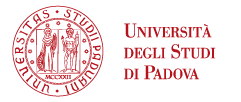Historical bricks of Padua: better under the wet

The use of fired bricks has been linked to the history of the city of Padua since Roman times, largely because of the abundance of clayey materials transported and deposited by the fluvial system that flows through the territory. This technological and versatile building material has been able to embrace the urban evolution of Padua, being an essential part of the tempered and welcoming character of the city.

The study of the bricks used during the Late Antiquity and Medieval times to build the Basilica of Santa Giustina of Padua, and those used in the remains of the Roman necropolis still preserved under the basilica, has allowed to know that very carbonate-rich clays were selected and high firing temperatures were adopted. Such technological choices yielded to high quality bricks.
Moreover, from the reuse of Roman bricks during Medieval times, it has been possible to verify that under high humidity conditions - typical of the climate of Padua throughout the year - such bricks have been rather good preserved.
In this video we will be showing the main conclusions of the European project CLAYONRISK, led by the researcher Elena Mercedes Pérez Monserrat, that aimed to know the production technologies of historic bricks used in the city of Padua and the main factors involved in their conservation.
Shooting and editing by Barbara Paknazar

![]() CLAYONRISK - Bricks manufacturing technologies to increase built heritage resilience and to raise common identities of people is a MSCA funded project (grant ID:836122)
CLAYONRISK - Bricks manufacturing technologies to increase built heritage resilience and to raise common identities of people is a MSCA funded project (grant ID:836122)





